
Software-Defined Networking with OpenFlow - Second Edition
¥71.93
Master OpenFlow concepts to improve and make your projects efficient with the help of Software-Defined Networking. About This Book ? Master the required platforms and tools to build network applications with OpenFlow ? Get to grips with the updated OpenFlow and build robust SDN-based solutions ? An end-to-end thorough overview of open-source switches, controllers, and tools Who This Book Is For If you are a network/system administrator or a system engineer and would like to implement OpenFlow concepts and take Software-Defined Networking on your projects to the next level, then this book is for you. If you are aware of broad networking concepts, and are familiar with the day-to-day operation of computer networks, you will find this book very beneficial. What You Will Learn ? Explore Software-Defined Networking and activities around SDN/OpenFlow including OpenFlow messages ? Hardware and software implementations of OpenFlow switches and experiment with Mininet GUI ? Learn about the role of OpenFlow in cloud computing by configuring and setting up the Neutron and Floodlight OpenFlow controller plugins ? Simulate and test utilities, and familiarize yourself with OpenFlow soft switches, controllers, virtualization, and orchestration tools ? Enhance and build environments for Net App development by installing VM's and tools such as Mininet and Wireshark ? Learn about hardware and software switches and get a feel for active open-source projects around SDN and OpenFlow In Detail OpenFlow paves the way for an open, centrally programmable structure, thereby accelerating the effectiveness of Software-Defined Networking. Software-Defined Networking with OpenFlow, Second Edition takes you through the product cycle and gives you an in-depth de*ion of the components and options that are available at each stage. The aim of this book is to help you implement OpenFlow concepts and improve Software-Defined Networking on your projects. You will begin by learning about building blocks and OpenFlow messages such as controller-to-switch and symmetric and asynchronous messages. Next, this book will take you through OpenFlow controllers and their existing implementations followed by network application development. Key topics include the basic environment setup, the Neutron and Floodlight OpenFlow controller, XORPlus OF13SoftSwitch, enterprise and affordable switches such as the Zodiac FX and HP2920. By the end of this book, you will be able to implement OpenFlow concepts and improve Software-Defined Networking in your projects. Style and approach This book is an easy-to-follow and pragmatic guide networking. Each topic adopts a logical approach and provides hints to help you build and deliver SDN Solutions efficiently.
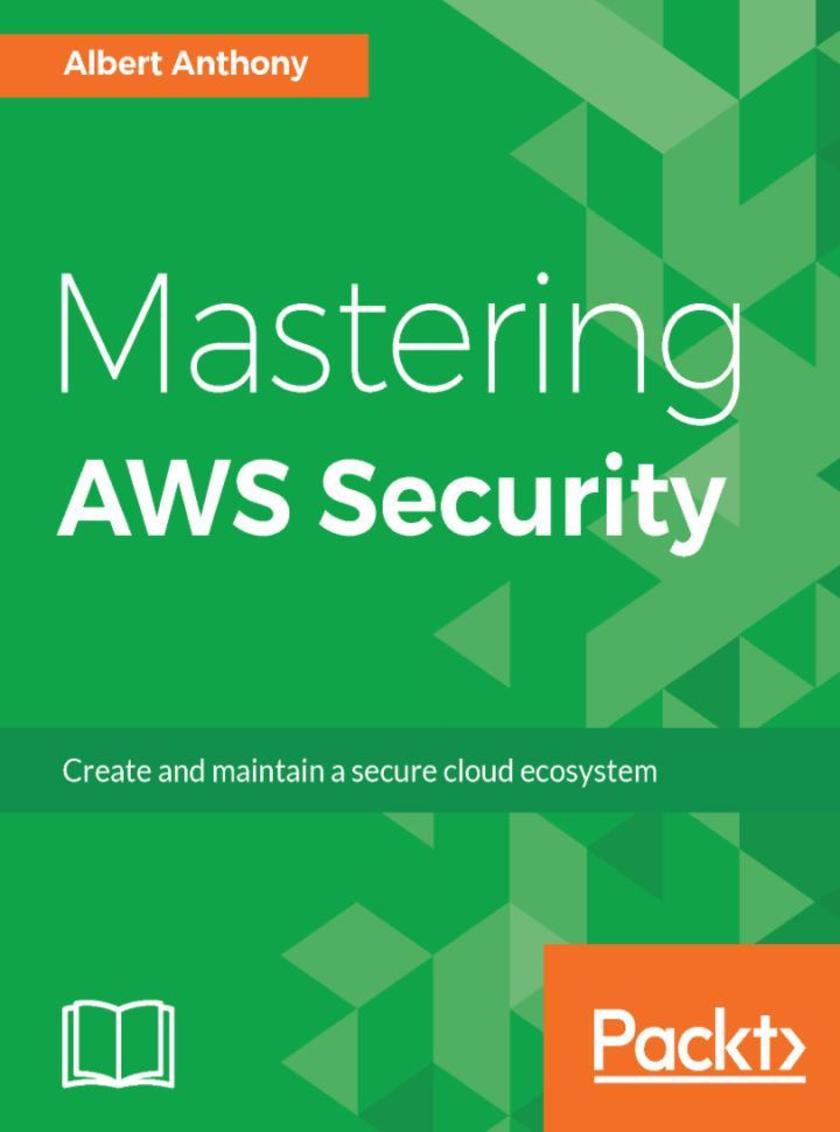
Mastering AWS Security
¥71.93
In depth informative guide to implement and use AWS security services effectively. About This Book ? Learn to secure your network, infrastructure, data and applications in AWS cloud ? Log, monitor and audit your AWS resources for continuous security and continuous compliance in AWS cloud ? Use AWS managed security services to automate security. Focus on increasing your business rather than being diverged onto security risks and issues with AWS security. ? Delve deep into various aspects such as the security model, compliance, access management and much more to build and maintain a secure environment. Who This Book Is For This book is for all IT professionals, system administrators and security analysts, solution architects and Chief Information Security Officers who are responsible for securing workloads in AWS for their organizations. It is helpful for all Solutions Architects who want to design and implement secure architecture on AWS by the following security by design principle. This book is helpful for personnel in Auditors and Project Management role to understand how they can audit AWS workloads and how they can manage security in AWS respectively. If you are learning AWS or championing AWS adoption in your organization, you should read this book to build security in all your workloads. You will benefit from knowing about security footprint of all major AWS services for multiple domains, use cases, and scenarios. What You Will Learn ? Learn about AWS Identity Management and Access control ? Gain knowledge to create and secure your private network in AWS ? Understand and secure your infrastructure in AWS ? Understand monitoring, logging and auditing in AWS ? Ensure Data Security in AWS ? Learn to secure your applications in AWS ? Explore AWS Security best practices In Detail Mastering AWS Security starts with a deep dive into the fundamentals of the shared security responsibility model. This book tells you how you can enable continuous security, continuous auditing, and continuous compliance by automating your security in AWS with the tools, services, and features it provides. Moving on, you will learn about access control in AWS for all resources. You will also learn about the security of your network, servers, data and applications in the AWS cloud using native AWS security services. By the end of this book, you will understand the complete AWS Security landscape, covering all aspects of end - to -end software and hardware security along with logging, auditing, and compliance of your entire IT environment in the AWS cloud. Lastly, the book will wrap up with AWS best practices for security. Style and approach The book will take a practical approach delving into different aspects of AWS security to help you become a master of it. It will focus on using native AWS security features and managed AWS services to help you achieve continuous security and continuous compliance.
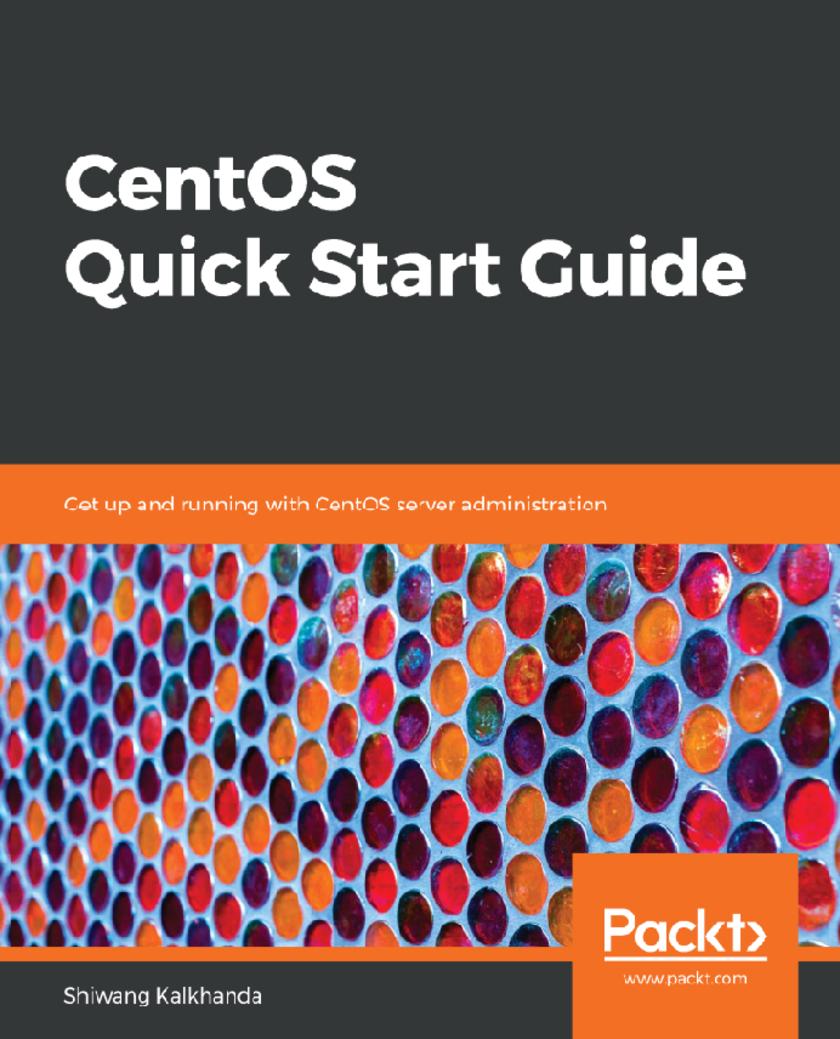
CentOS Quick Start Guide
¥71.93
A concise walk-through of CentOS 7, starting from installation to securing it’s environment. Key Features *No previous Linux environment experience needed for reading this book *Get comfortable with a popular and stable Red Hat Enterprise Linux distribution *Most of the command line based concepts are explained with graphics Book Description Linux kernel development has been the worlds largest collaborative project to date. With this practical guide, you will learn Linux through one of its most popular and stable distributions. This book will introduce you to essential Linux skills using CentOS 7. It describes how a Linux system is organized, and will introduce you to key command-line concepts you can practice on your own. It will guide you in performing basic system administration tasks and day-to-day operations in a Linux environment. You will learn core system administration skills for managing a system running CentOS 7 or a similar operating system, such as RHEL 7, Scientific Linux, and Oracle Linux. You will be able to perform installation, establish network connectivity and user and process management, modify file permissions, manage text files using the command line, and implement basic security administration after covering this book. By the end of this book, you will have a solid understanding of working with Linux using the command line. What you will learn *Understand file system hierarchy and essential command-line skills *Use Vi editor, I/O redirections and how to work with common text manipulating tools *Create, delete, modify user accounts and manage passwords and their aging policy *Manage file ownership, permissions, and ACL *Execute process management and monitoring on the command line *Validate and manage network configuration using nmcli *Manage remote logins using SSH and file transfer using SCP and Rsync *Understand system logging, how to control system services with systemd and systemctl, and manage firewalId Who this book is for Any individual who wants to learn how to use Linux as server or desktop in his environment. Whether you are a developer, budding system administrator, or tech lover with no previous Linux administration background, you will be able to start your journey in Linux using CentOS 7 with this book.
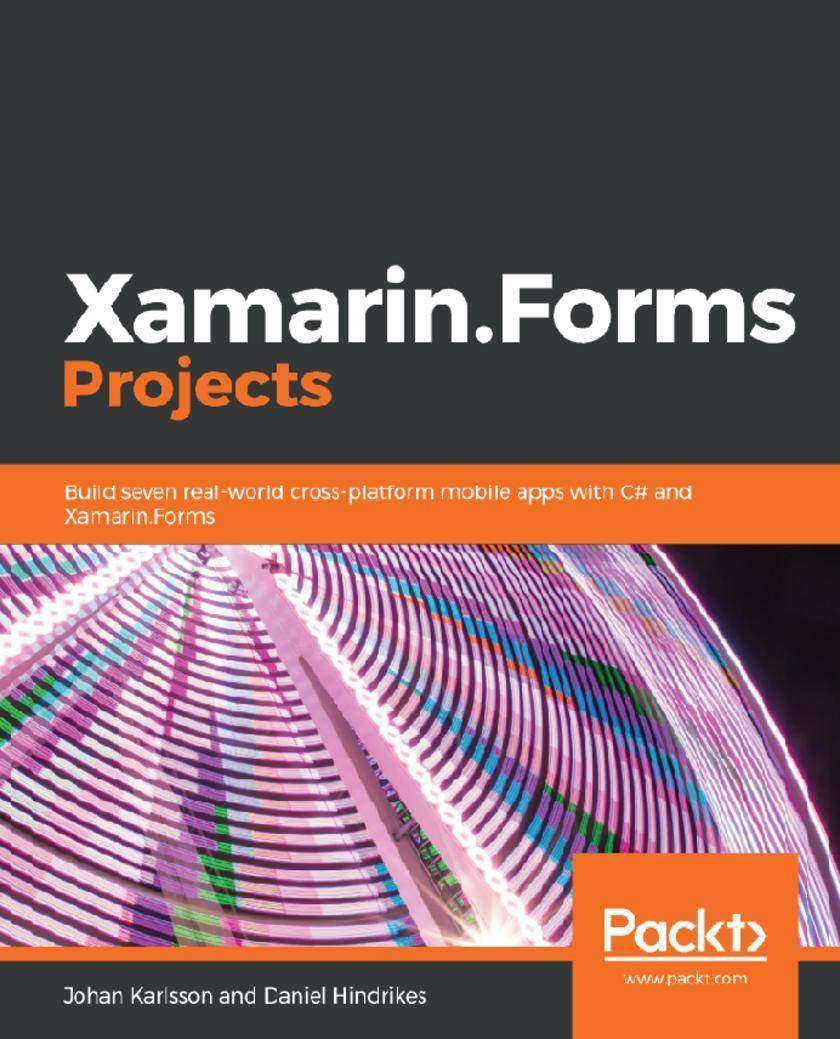
Xamarin.Forms Projects
¥71.93
Explore Xamarin.Forms to develop dynamic applications Key Features *Explore SQLite through Xamarin to store locations for various location-based applications *Make a real-time serverless chat service by using Azure SignalR service *Build Augmented Reality application with the power of UrhoSharp together with ARKit and ARCore Book Description Xamarin.Forms is a lightweight cross-platform development toolkit for building applications with a rich user interface. In this book you'll start by building projects that explain the Xamarin.Forms ecosystem to get up and running with building cross-platform applications. We'll increase in difficulty throughout the projects, making you learn the nitty-gritty of Xamarin.Forms offerings. You'll gain insights into the architecture, how to arrange your app's design, where to begin developing, what pitfalls exist, and how to avoid them. The book contains seven real-world projects, to get you hands-on with building rich UIs and providing a truly cross-platform experience. It will also guide you on how to set up a machine for Xamarin app development. You'll build a simple to-do application that gets you going, then dive deep into building advanced apps such as messaging platform, games, and machine learning, to build a UI for an augmented reality project. By the end of the book, you'll be confident in building cross-platforms and fitting Xamarin.Forms toolkits in your app development. You'll be able to take the practice you get from this book to build applications that comply with your requirements. What you will learn *Set up a machine for Xamarin development *Get to know about MVVM and data bindings in Xamarin.Forms *Understand how to use custom renderers to gain platform-specific access *Discover Geolocation services through Xamarin Essentials *Create an abstraction of ARKit and ARCore to expose as a single API for the game *Learn how to train a model for image *classification with Azure Cognitive Services Who this book is for This book is for mobile application developers who want to start building native mobile apps using the powerful Xamarin.Forms and C#. Working knowledge of C#, .NET, and Visual Studio is required.
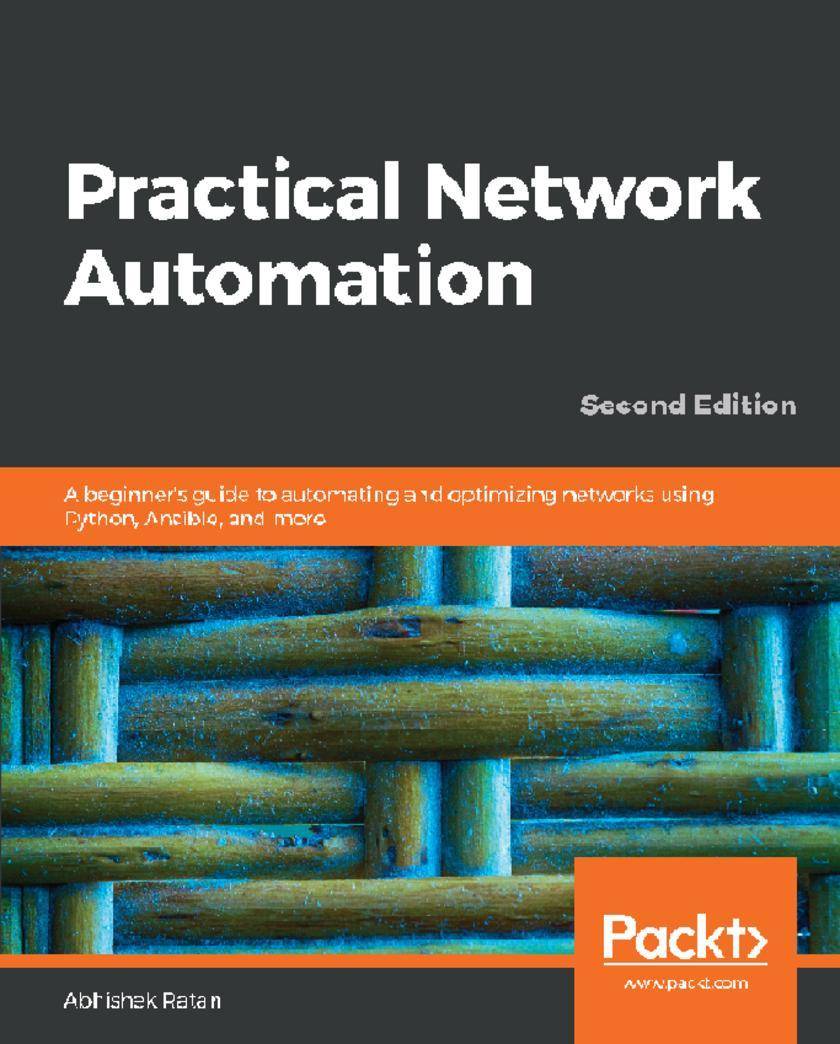
Practical Network Automation
¥71.93
Leverage the power of Python, Ansible and other network automation tools to make your network robust and more secure Key Features *Get introduced to the concept of network automation with relevant use cases *Apply Continuous Integration and DevOps to improve your network performance *Implement effective automation using tools such as Python, Ansible, and more Book Description Network automation is the use of IT controls to supervise and carry out everyday network management functions. It plays a key role in network virtualization technologies and network functions. The book starts by providing an introduction to network automation, and its applications, which include integrating DevOps tools to automate the network efficiently. It then guides you through different network automation tasks and covers various data digging and performing tasks such as ensuring golden state configurations using templates, interface parsing. This book also focuses on Intelligent Operations using Artificial Intelligence and troubleshooting using chatbots and voice commands. The book then moves on to the use of Python and the management of SSH keys for machine-to-machine (M2M) communication, all followed by practical use cases. The book also covers the importance of Ansible for network automation, including best practices in automation; ways to test automated networks using tools such as Puppet, SaltStack, and Chef; and other important techniques. Through practical use-cases and examples, this book will acquaint you with the various aspects of network automation. It will give you the solid foundation you need to automate your own network without any hassle. What you will learn *Get started with the fundamental concepts of network automation *Perform intelligent data mining and remediation based on triggers *Understand how AIOps works in operations *Trigger automation through data factors *Improve your data center's robustness and security through data digging *Get access infrastructure through API Framework for chatbot and voice interactive troubleshootings *Set up communication with SSH-based devices using Netmiko Who this book is for If you are a network engineer or a DevOps professional looking for an extensive guide to help you automate and manage your network efficiently, then this book is for you. No prior experience with network automation is required to get started, however you will need some exposure to Python programming to get the most out of this book.
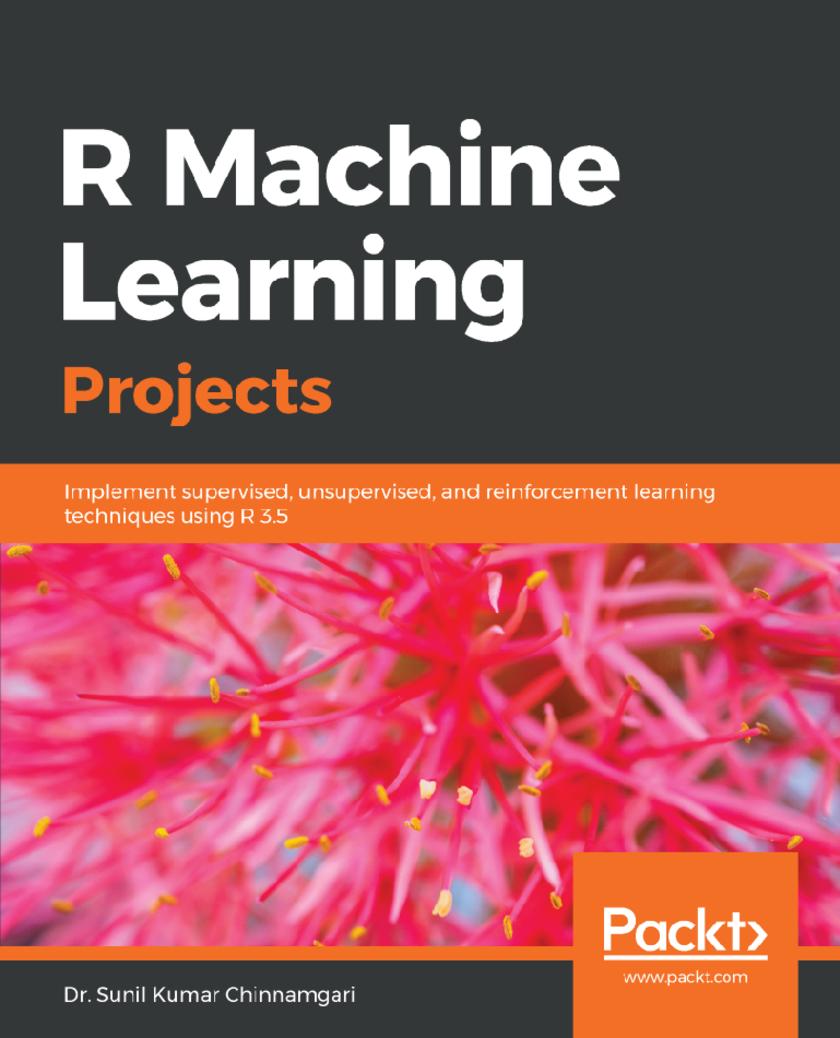
R Machine Learning Projects
¥71.93
Master a range of machine learning domains with real-world projects using TensorFlow for R, H2O, MXNet, and more Key Features *Master machine learning, deep learning, and predictive modeling concepts in R 3.5 *Build intelligent end-to-end projects for finance, retail, social media, and a variety of domains *Implement smart cognitive models with helpful tips and best practices Book Description R is one of the most popular languages when it comes to performing computational statistics (statistical computing) easily and exploring the mathematical side of machine learning. With this book, you will leverage the R ecosystem to build efficient machine learning applications that carry out intelligent tasks within your organization. This book will help you test your knowledge and skills, guiding you on how to build easily through to complex machine learning projects. You will first learn how to build powerful machine learning models with ensembles to predict employee attrition. Next, you’ll implement a joke recommendation engine and learn how to perform sentiment analysis on Amazon reviews. You’ll also explore different clustering techniques to segment customers using wholesale data. In addition to this, the book will get you acquainted with credit card fraud detection using autoencoders, and reinforcement learning to make predictions and win on a casino slot machine. By the end of the book, you will be equipped to confidently perform complex tasks to build research and commercial projects for automated operations. What you will learn *Explore deep neural networks and various frameworks that can be used in R *Develop a joke recommendation engine to recommend jokes that match users’ tastes *Create powerful ML models with ensembles to predict employee attrition *Build autoencoders for credit card fraud detection *Work with image recognition and convolutional neural networks *Make predictions for casino slot machine using reinforcement learning *Implement NLP techniques for sentiment analysis and customer segmentation Who this book is for If you’re a data analyst, data scientist, or machine learning developer who wants to master machine learning concepts using R by building real-world projects, this is the book for you. Each project will help you test your skills in implementing machine learning algorithms and techniques. A basic understanding of machine learning and working knowledge of R programming is necessary to get the most out of this book.
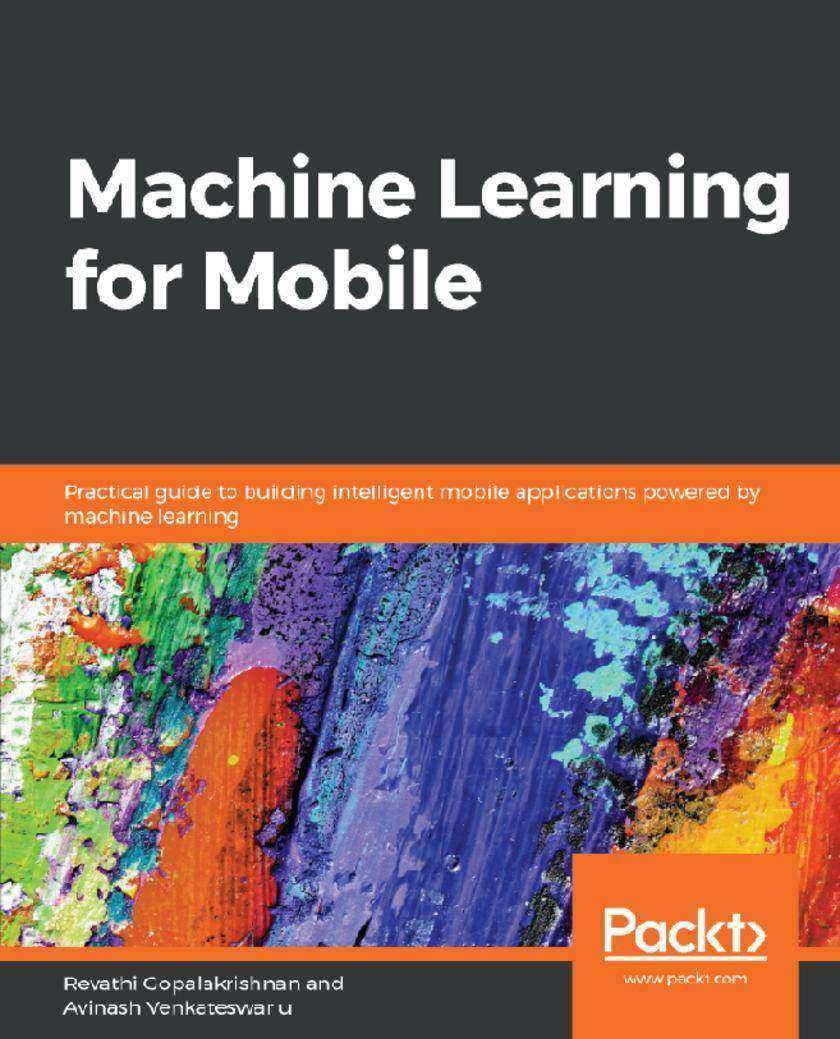
Machine Learning for Mobile
¥71.93
Leverage the power of machine learning on mobiles and build intelligent mobile applications with ease Key Features *Build smart mobile applications for Android and iOS devices *Use popular machine learning toolkits such as Core ML and TensorFlow Lite *Explore cloud services for machine learning that can be used in mobile apps Book Description Machine learning presents an entirely unique opportunity in software development. It allows smartphones to produce an enormous amount of useful data that can be mined, analyzed, and used to make predictions. This book will help you master machine learning for mobile devices with easy-to-follow, practical examples. You will begin with an introduction to machine learning on mobiles and grasp the fundamentals so you become well-acquainted with the subject. You will master supervised and unsupervised learning algorithms, and then learn how to build a machine learning model using mobile-based libraries such as Core ML, TensorFlow Lite, ML Kit, and Fritz on Android and iOS platforms. In doing so, you will also tackle some common and not-so-common machine learning problems with regard to Computer Vision and other real-world domains. By the end of this book, you will have explored machine learning in depth and implemented on-device machine learning with ease, thereby gaining a thorough understanding of how to run, create, and build real-time machine-learning applications on your mobile devices. What you will learn *Build intelligent machine learning models that run on Android and iOS *Use machine learning toolkits such as Core ML, TensorFlow Lite, and more *Learn how to use Google Mobile Vision in your mobile apps *Build a spam message detection system using Linear SVM *Using Core ML to implement a regression model for iOS devices *Build image classification systems using TensorFlow Lite and Core ML Who this book is for If you are a mobile app developer or a machine learning enthusiast keen to use machine learning to build smart mobile applications, this book is for you. Some experience with mobile application development is all you need to get started with this book. Prior experience with machine learning will be an added bonus
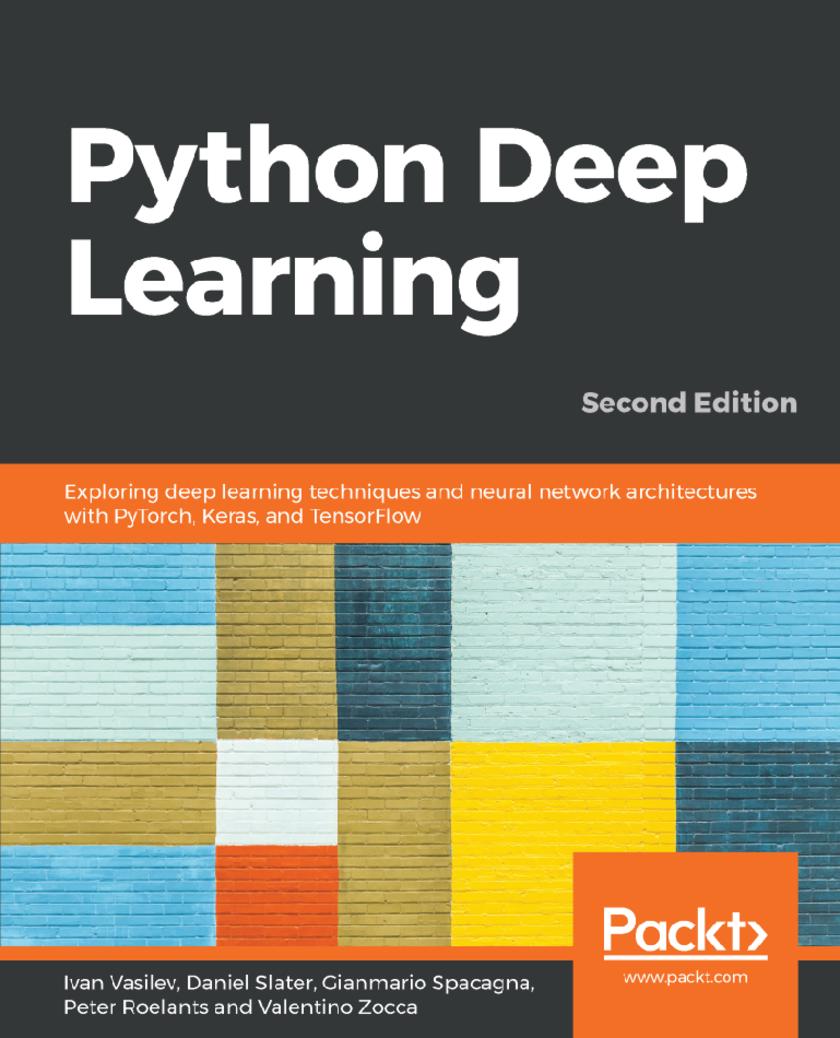
Python Deep Learning
¥71.93
Learn advanced state-of-the-art deep learning techniques and their applications using popular Python libraries Key Features *Build a strong foundation in neural networks and deep learning with Python libraries *Explore advanced deep learning techniques and their applications across computer vision and NLP *Learn how a computer can navigate in complex environments with reinforcement learning Book Description With the surge in artificial intelligence in applications catering to both business and consumer needs, deep learning is more important than ever for meeting current and future market demands. With this book, you’ll explore deep learning, and learn how to put machine learning to use in your projects. This second edition of Python Deep Learning will get you up to speed with deep learning, deep neural networks, and how to train them with high-performance algorithms and popular Python frameworks. You’ll uncover different neural network architectures, such as convolutional networks, recurrent neural networks, long short-term memory (LSTM) networks, and capsule networks. You’ll also learn how to solve problems in the fields of computer vision, natural language processing (NLP), and speech recognition. You'll study generative model approaches such as variational autoencoders and Generative Adversarial Networks (GANs) to generate images. As you delve into newly evolved areas of reinforcement learning, you’ll gain an understanding of state-of-the-art algorithms that are the main components behind popular games Go, Atari, and Dota. By the end of the book, you will be well-versed with the theory of deep learning along with its real-world applications. What you will learn *Grasp the mathematical theory behind neural networks and deep learning processes *Investigate and resolve computer vision challenges using convolutional networks and capsule networks *Solve generative tasks using variational autoencoders and Generative Adversarial Networks *Implement complex NLP tasks using recurrent networks (LSTM and GRU) and attention models *Explore reinforcement learning and understand how agents behave in a complex environment *Get up to date with applications of deep learning in autonomous vehicles Who this book is for This book is for data science practitioners, machine learning engineers, and those interested in deep learning who have a basic foundation in machine learning and some Python programming experience. A background in mathematics and conceptual understanding of calculus and statistics will help you gain maximum benefit from this book.
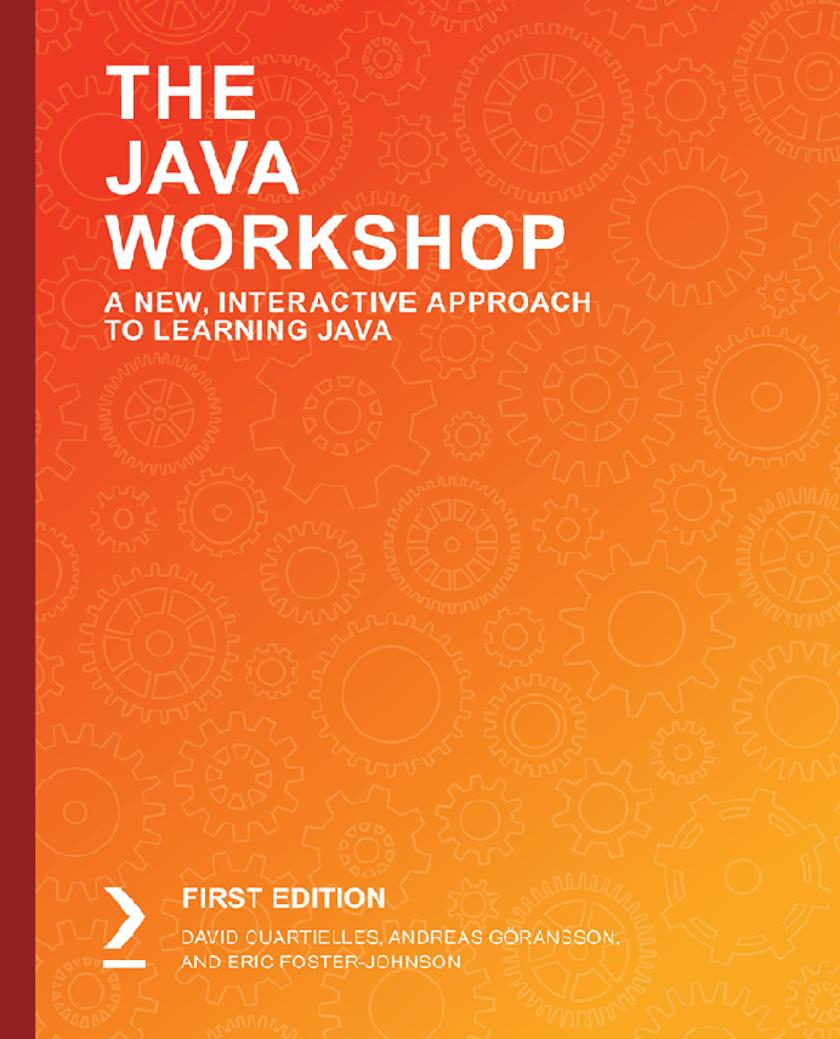
The Java Workshop
¥71.93
Cut through the noise and get real results with a step-by-step approach to learning Java programming Key Features * Ideal for the Java beginner who is getting started for the first time * A step-by-step Java tutorial with exercises and activities that help build key skills * Structured to let you progress at your own pace, on your own terms * Use your physical copy to redeem free access to the online interactive edition Book Description You already know you want to learn Java, and a smarter way to learn Java 12 is to learn by doing. The Java Workshop focuses on building up your practical skills so that you can develop high-performance Java applications that work flawlessly within the JVM across web, mobile and desktop. You'll learn from real examples that lead to real results. Throughout The Java Workshop, you'll take an engaging step-by-step approach to understanding Java. You won't have to sit through any unnecessary theory. If you're short on time you can jump into a single exercise each day or spend an entire weekend learning about Reactive programming and Unit testing. It's your choice. Learning on your terms, you'll build up and reinforce key skills in a way that feels rewarding. Every physical copy of The Java Workshop unlocks access to the interactive edition. With videos detailing all exercises and activities, you'll always have a guided solution. You can also benchmark yourself against assessments, track progress, and receive free content updates. You'll even earn a secure credential that you can share and verify online upon completion. It's a premium learning experience that's included with your printed copy. To redeem, follow the instructions located at the start of your Java book. Fast-paced and direct, The Java Workshop is the ideal companion for Java beginners. You'll build and iterate on your code like a software developer, learning along the way. This process means that you'll find that your new skills stick, embedded as best practice. A solid foundation for the years ahead. What you will learn * Get to grips with fundamental concepts and conventions of Java 12 * Write clean and well-commented code that's easy to maintain * Debug and compile logical errors and handle exceptions in your programs * Understand how to work with Java APIs and Java streams * Learn how to use third-party libraries and software development kits (SDKs) * Discover how you can work with information stored in databases * Understand how you can keep data secure with cryptography and encryption * Learn how to keep your development process bug-free with unit testing in Java Who this book is for Our goal at Packt is to help you be successful, in whatever it is you choose to do. The Java Workshop is an ideal Java tutorial for the Java beginner who is just getting started. Pick up a Workshop today, and let Packt help you develop skills that stick with you for life.
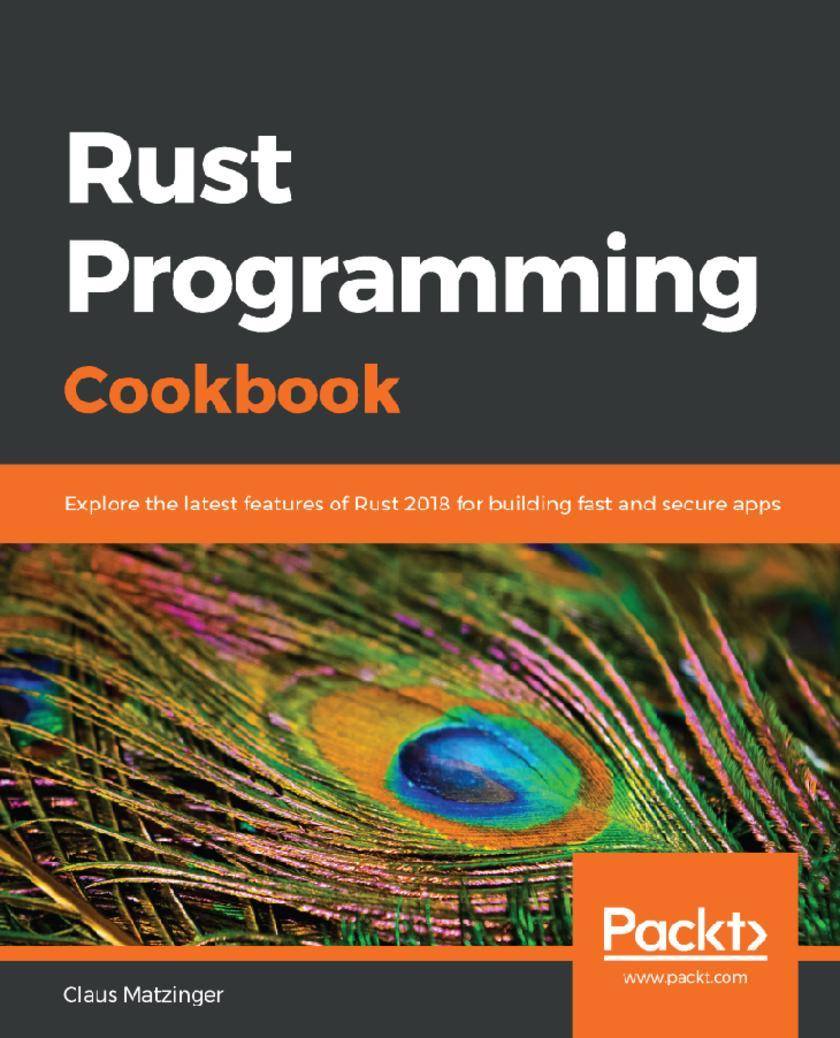
Rust Programming Cookbook
¥71.93
Practical solutions to overcome challenges in creating console and web applications and working with systems-level and embedded code, network programming, deep neural networks, and much more. Key Features * Work through recipes featuring advanced concepts such as concurrency, unsafe code, and macros to migrate your codebase to the Rust programming language * Learn how to run machine learning models with Rust * Explore error handling, macros, and modularization to write maintainable code Book Description Rust 2018, Rust's first major milestone since version 1.0, brings more advancement in the Rust language. The Rust Programming Cookbook is a practical guide to help you overcome challenges when writing Rust code. This Rust book covers recipes for configuring Rust for different environments and architectural designs, and provides solutions to practical problems. It will also take you through Rust's core concepts, enabling you to create efficient, high-performance applications that use features such as zero-cost abstractions and improved memory management. As you progress, you'll delve into more advanced topics, including channels and actors, for building scalable, production-grade applications, and even get to grips with error handling, macros, and modularization to write maintainable code. You will then learn how to overcome common roadblocks when using Rust for systems programming, IoT, web development, and network programming. Finally, you'll discover what Rust 2018 has to offer for embedded programmers. By the end of the book, you'll have learned how to build fast and safe applications and services using Rust. What you will learn * Understand how Rust provides unique solutions to solve system programming language problems * Grasp the core concepts of Rust to develop fast and safe applications * Explore the possibility of integrating Rust units into existing applications for improved efficiency * Discover how to achieve better parallelism and security with Rust * Write Python extensions in Rust * Compile external assembly files and use the Foreign Function Interface (FFI) * Build web applications and services using Rust for high performance Who this book is for The Rust cookbook is for software developers looking to enhance their knowledge of Rust and leverage its features using modern programming practices. Familiarity with Rust language is expected to get the most out of this book.
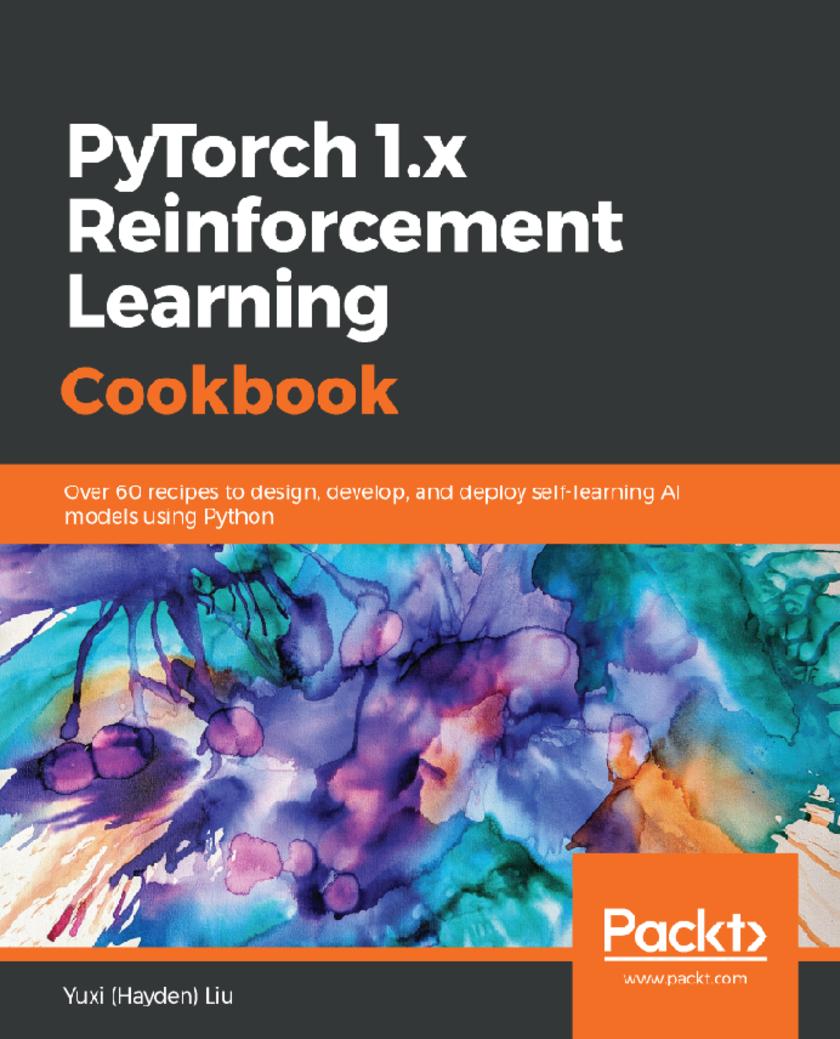
PyTorch 1.x Reinforcement Learning Cookbook
¥71.93
Implement reinforcement learning techniques and algorithms with the help of real-world examples and recipes Key Features * Use PyTorch 1.x to design and build self-learning artificial intelligence (AI) models * Implement RL algorithms to solve control and optimization challenges faced by data scientists today * Apply modern RL libraries to simulate a controlled environment for your projects Book Description Reinforcement learning (RL) is a branch of machine learning that has gained popularity in recent times. It allows you to train AI models that learn from their own actions and optimize their behavior. PyTorch has also emerged as the preferred tool for training RL models because of its efficiency and ease of use. With this book, you'll explore the important RL concepts and the implementation of algorithms in PyTorch 1.x. The recipes in the book, along with real-world examples, will help you master various RL techniques, such as dynamic programming, Monte Carlo simulations, temporal difference, and Q-learning. You'll also gain insights into industry-specific applications of these techniques. Later chapters will guide you through solving problems such as the multi-armed bandit problem and the cartpole problem using the multi-armed bandit algorithm and function approximation. You'll also learn how to use Deep Q-Networks to complete Atari games, along with how to effectively implement policy gradients. Finally, you'll discover how RL techniques are applied to Blackjack, Gridworld environments, internet advertising, and the Flappy Bird game. By the end of this book, you'll have developed the skills you need to implement popular RL algorithms and use RL techniques to solve real-world problems. What you will learn * Use Q-learning and the state–action–reward–state–action (SARSA) algorithm to solve various Gridworld problems * Develop a multi-armed bandit algorithm to optimize display advertising * Scale up learning and control processes using Deep Q-Networks * Simulate Markov Decision Processes, OpenAI Gym environments, and other common control problems * Select and build RL models, evaluate their performance, and optimize and deploy them * Use policy gradient methods to solve continuous RL problems Who this book is for Machine learning engineers, data scientists and AI researchers looking for quick solutions to different reinforcement learning problems will find this book useful. Although prior knowledge of machine learning concepts is required, experience with PyTorch will be useful but not necessary.
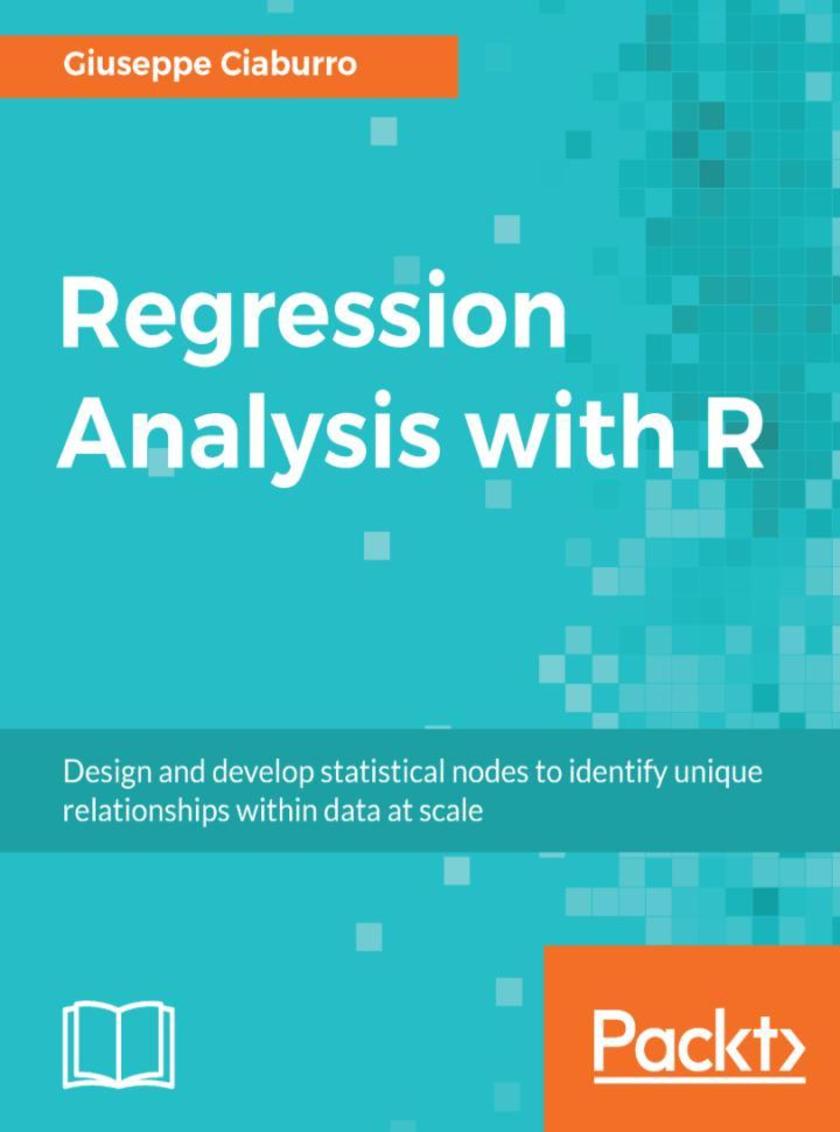
Regression Analysis with R
¥73.02
Build effective regression models in R to extract valuable insights from real data About This Book ? Implement different regression analysis techniques to solve common problems in data science - from data exploration to dealing with missing values ? From Simple Linear Regression to Logistic Regression - this book covers all regression techniques and their implementation in R ? A complete guide to building effective regression models in R and interpreting results from them to make valuable predictions Who This Book Is For This book is intended for budding data scientists and data analysts who want to implement regression analysis techniques using R. If you are interested in statistics, data science, machine learning and wants to get an easy introduction to the topic, then this book is what you need! Basic understanding of statistics and math will help you to get the most out of the book. Some programming experience with R will also be helpful What You Will Learn ? Get started with the journey of data science using Simple linear regression ? Deal with interaction, collinearity and other problems using multiple linear regression ? Understand diagnostics and what to do if the assumptions fail with proper analysis ? Load your dataset, treat missing values, and plot relationships with exploratory data analysis ? Develop a perfect model keeping overfitting, under-fitting, and cross-validation into consideration ? Deal with classification problems by applying Logistic regression ? Explore other regression techniques – Decision trees, Bagging, and Boosting techniques ? Learn by getting it all in action with the help of a real world case study. In Detail Regression analysis is a statistical process which enables prediction of relationships between variables. The predictions are based on the casual effect of one variable upon another. Regression techniques for modeling and analyzing are employed on large set of data in order to reveal hidden relationship among the variables. This book will give you a rundown explaining what regression analysis is, explaining you the process from scratch. The first few chapters give an understanding of what the different types of learning are – supervised and unsupervised, how these learnings differ from each other. We then move to covering the supervised learning in details covering the various aspects of regression analysis. The outline of chapters are arranged in a way that gives a feel of all the steps covered in a data science process – loading the training dataset, handling missing values, EDA on the dataset, transformations and feature engineering, model building, assessing the model fitting and performance, and finally making predictions on unseen datasets. Each chapter starts with explaining the theoretical concepts and once the reader gets comfortable with the theory, we move to the practical examples to support the understanding. The practical examples are illustrated using R code including the different packages in R such as R Stats, Caret and so on. Each chapter is a mix of theory and practical examples. By the end of this book you will know all the concepts and pain-points related to regression analysis, and you will be able to implement your learning in your projects. Style and approach An easy-to-follow step by step guide which will help you get to grips with real world application of Regression Analysis with R
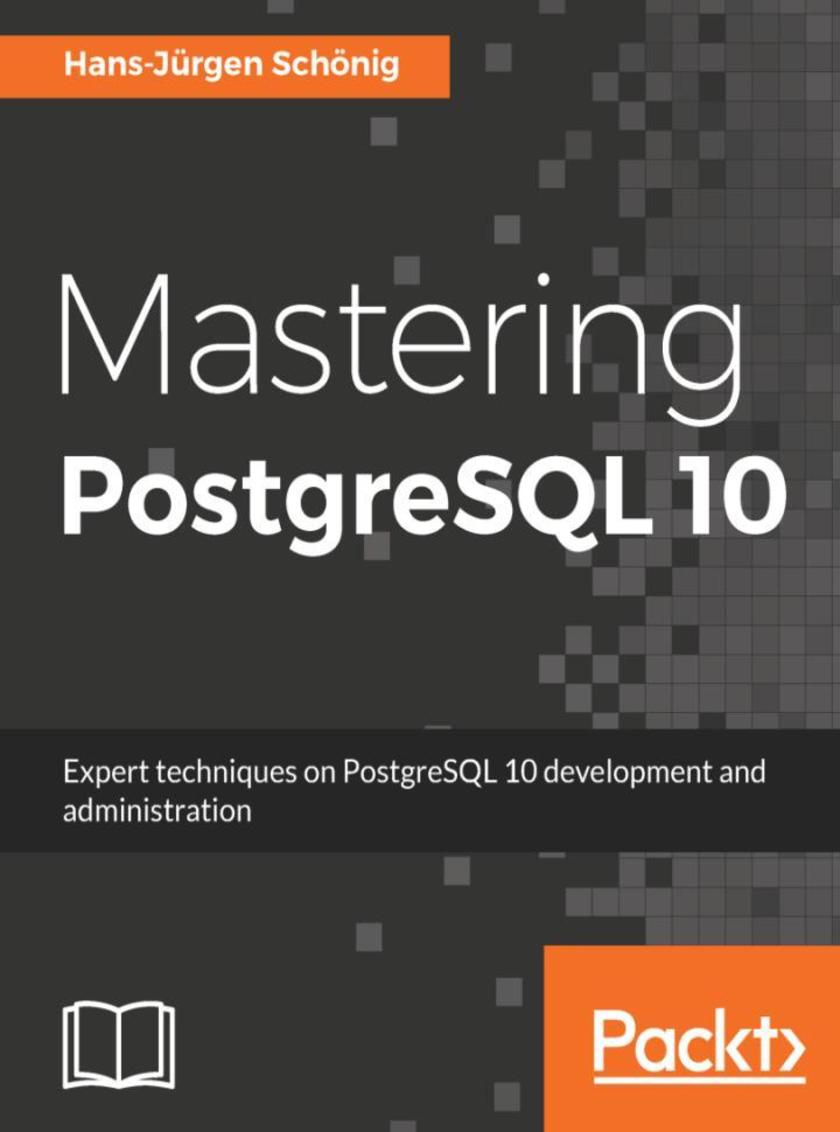
Mastering PostgreSQL 10
¥73.02
Master the capabilities of PostgreSQL 10 to efficiently manage and maintain your database About This Book ? Your one-stop guide to mastering advanced concepts in PostgreSQL 10 with ease ? Master query optimization, replication, and high availability with PostgreSQL ? Extend the functionalities of your PostgreSQL instance to suit your organizational needs with minimal effort Who This Book Is For If you are a PostgreSQL data architect or an administrator and want to understand how to implement advanced functionalities and master complex administrative tasks with PostgreSQL 10, then this book is perfect for you. Prior experience of administrating a PostgreSQL database and a working knowledge of SQL are required to make the best use of this book. What You Will Learn ? Get to grips with the advanced features of PostgreSQL 10 and handle advanced SQL ? Make use of the indexing features in PostgreSQL and fine-tune the performance of your queries ? Work with stored procedures and manage backup and recovery ? Master replication and failover techniques ? Troubleshoot your PostgreSQL instance for solutions to common and not-so-common problems ? Learn how to migrate your database from MySQL and Oracle to PostgreSQL without any hassle In Detail PostgreSQL is an open source database used for handling large datasets (big data) and as a JSON document database. This book highlights the newly introduced features in PostgreSQL 10, and shows you how you can build better PostgreSQL applications, and administer your PostgreSQL database more efficiently. We begin by explaining advanced database design concepts in PostgreSQL 10, along with indexing and query optimization. You will also see how to work with event triggers and perform concurrent transactions and table partitioning, along with exploring SQL and server tuning. We will walk you through implementing advanced administrative tasks such as server maintenance and monitoring, replication, recovery, high availability, and much more. You will understand common and not-so-common troubleshooting problems and how you can overcome them. By the end of this book, you will have an expert-level command of advanced database functionalities and will be able to implement advanced administrative tasks with PostgreSQL 10. Style and approach This mastering-level guide delves into the advanced functionalities of PostgreSQL 10
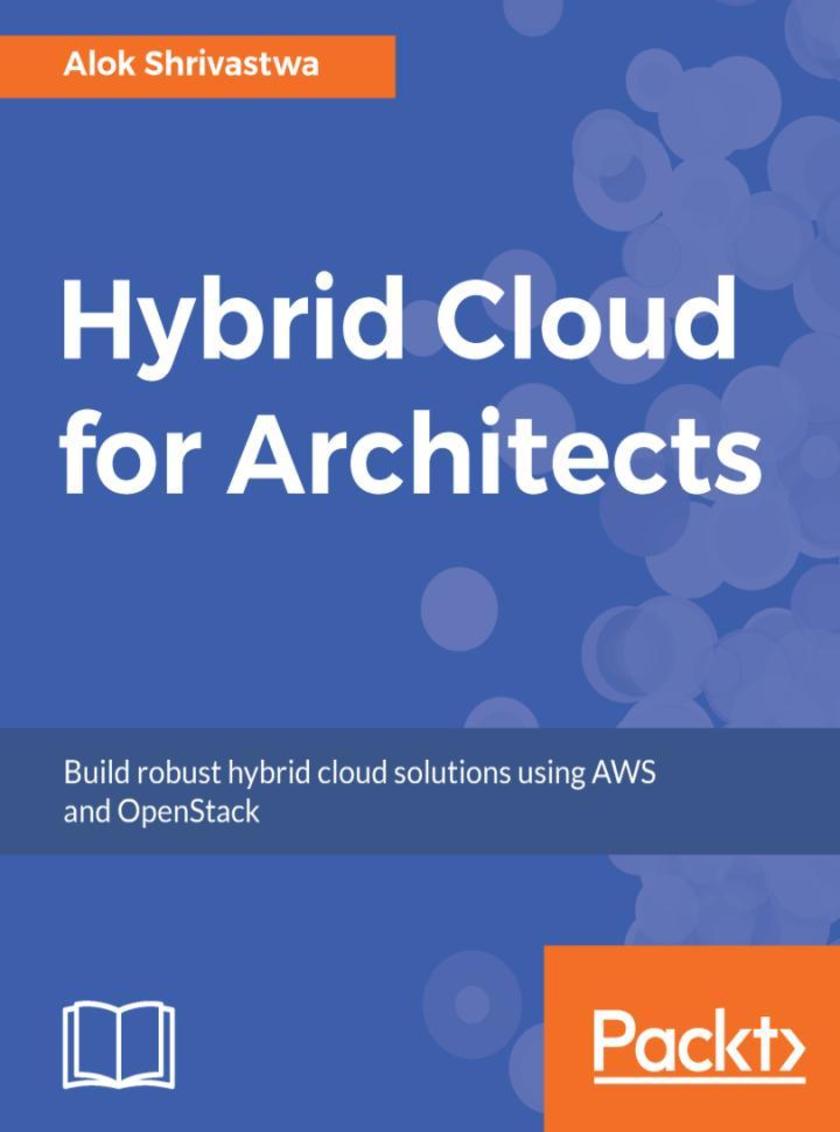
Hybrid Cloud for Architects
¥73.02
Build your own hybrid cloud strategy with this comprehensive learning guide. About This Book ? Build a hybrid cloud strategy for your organization with AWS and OpenStack ? Leverage Hybrid Cloud to design a complex deployment pipeline ? Learn to implement security and monitoring best practices with real-world examples Who This Book Is For This book is targeted at cloud architects, cloud solution providers, DevOps engineers, or any working stakeholder who wants to learn about the hybrid cloud architecture. A basic understanding of public and private cloud is desirable. What You Will Learn ? Learn the demographics and definitions of Hybrid Cloud ? Understand the different architecture and design of Hybrid Cloud ? Explore multi-cloud strategy and use it with your hybrid cloud ? Implement a Hybrid Cloud using CMP / Common API’s ? Implement a Hybrid Cloud using Containers ? Overcome various challenges and issues while working with your Hybrid Cloud ? Understand how to monitor your Hybrid Cloud ? Discover the security implications in the Hybrid Cloud In Detail Hybrid cloud is currently the buzz word in the cloud world. Organizations are planning to adopt hybrid cloud strategy due to its advantages such as untested workloads, cloud-bursting, cloud service brokering and so on. This book will help you understand the dynamics, design principles, and deployment strategies of a Hybrid Cloud. You will start by understanding the concepts of hybrid cloud and the problems it solves as compared to a stand-alone public and private cloud. You will be delving into the different architecture and design of hybrid cloud. The book will then cover advanced concepts such as building a deployment pipeline, containerization strategy, and data storage mechanism. Next up, you will be able to deploy an external CMP to run a Hybrid cloud and integrate it with your OpenStack and AWS environments. You will also understand the strategy for designing a Hybrid Cloud using containerization and work with pre-built solutions like vCloud Air, VMware for AWS, and Azure Stack. Finally, the book will cover security and monitoring related best practices that will help you secure your cloud infrastructure. By the end of the book, you will be in a position to build a hybrid cloud strategy for your organization. Style and approach This book follows a step-by-step, practical approach to deploying and implementing hybrid cloud architectures using AWS and OpenStack.
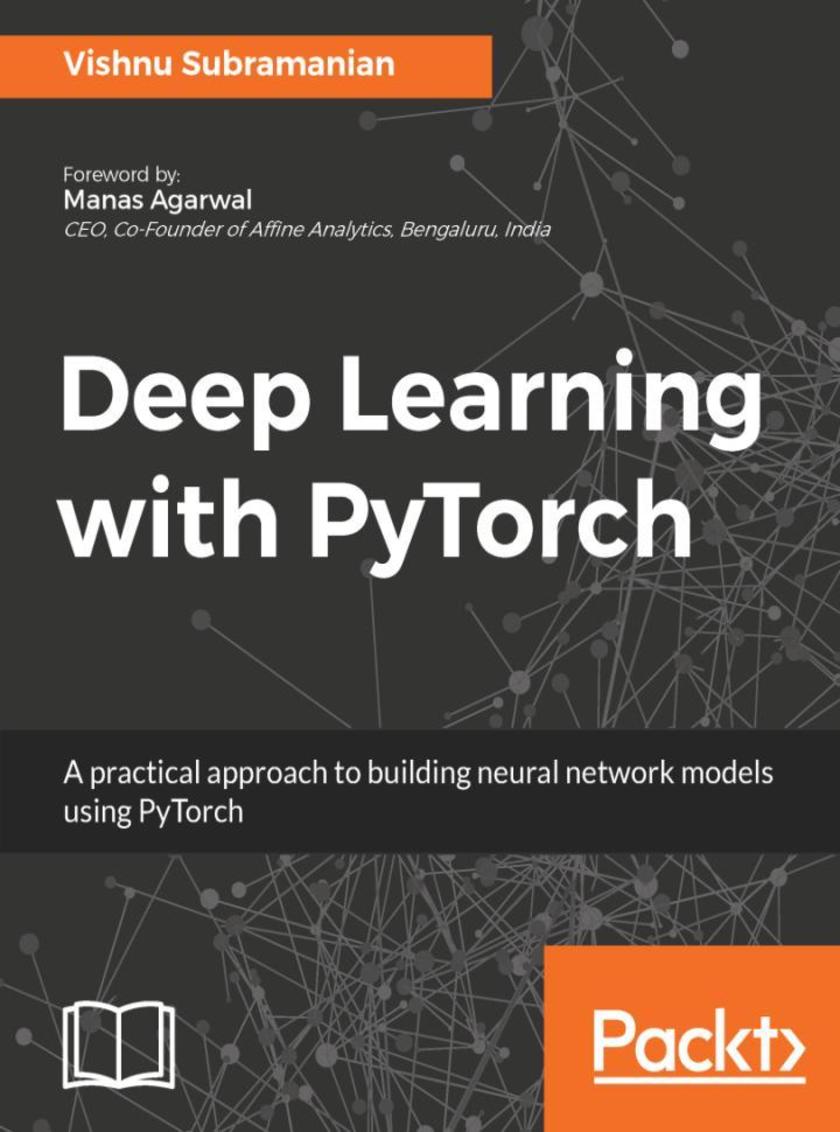
Deep Learning with PyTorch
¥73.02
Build neural network models in text, vision and advanced analytics using PyTorch About This Book ? Learn PyTorch for implementing cutting-edge deep learning algorithms. ? Train your neural networks for higher speed and flexibility and learn how to implement them in various scenarios; ? Cover various advanced neural network architecture such as ResNet, Inception, DenseNet and more with practical examples; Who This Book Is For This book is for machine learning engineers, data analysts, data scientists interested in deep learning and are looking to explore implementing advanced algorithms in PyTorch. Some knowledge of machine learning is helpful but not a mandatory need. Working knowledge of Python programming is expected. What You Will Learn ? Use PyTorch for GPU-accelerated tensor computations ? Build custom datasets and data loaders for images and test the models using torchvision and torchtext ? Build an image classifier by implementing CNN architectures using PyTorch ? Build systems that do text classification and language modeling using RNN, LSTM, and GRU ? Learn advanced CNN architectures such as ResNet, Inception, Densenet, and learn how to use them for transfer learning ? Learn how to mix multiple models for a powerful ensemble model ? Generate new images using GAN’s and generate artistic images using style transfer In Detail Deep learning powers the most intelligent systems in the world, such as Google Voice, Siri, and Alexa. Advancements in powerful hardware, such as GPUs, software frameworks such as PyTorch, Keras, Tensorflow, and CNTK along with the availability of big data have made it easier to implement solutions to problems in the areas of text, vision, and advanced analytics. This book will get you up and running with one of the most cutting-edge deep learning libraries—PyTorch. PyTorch is grabbing the attention of deep learning researchers and data science professionals due to its accessibility, efficiency and being more native to Python way of development. You'll start off by installing PyTorch, then quickly move on to learn various fundamental blocks that power modern deep learning. You will also learn how to use CNN, RNN, LSTM and other networks to solve real-world problems. This book explains the concepts of various state-of-the-art deep learning architectures, such as ResNet, DenseNet, Inception, and Seq2Seq, without diving deep into the math behind them. You will also learn about GPU computing during the course of the book. You will see how to train a model with PyTorch and dive into complex neural networks such as generative networks for producing text and images. By the end of the book, you'll be able to implement deep learning applications in PyTorch with ease. Style and approach An end-to-end guide that teaches you all about PyTorch and how to implement it in various scenarios.
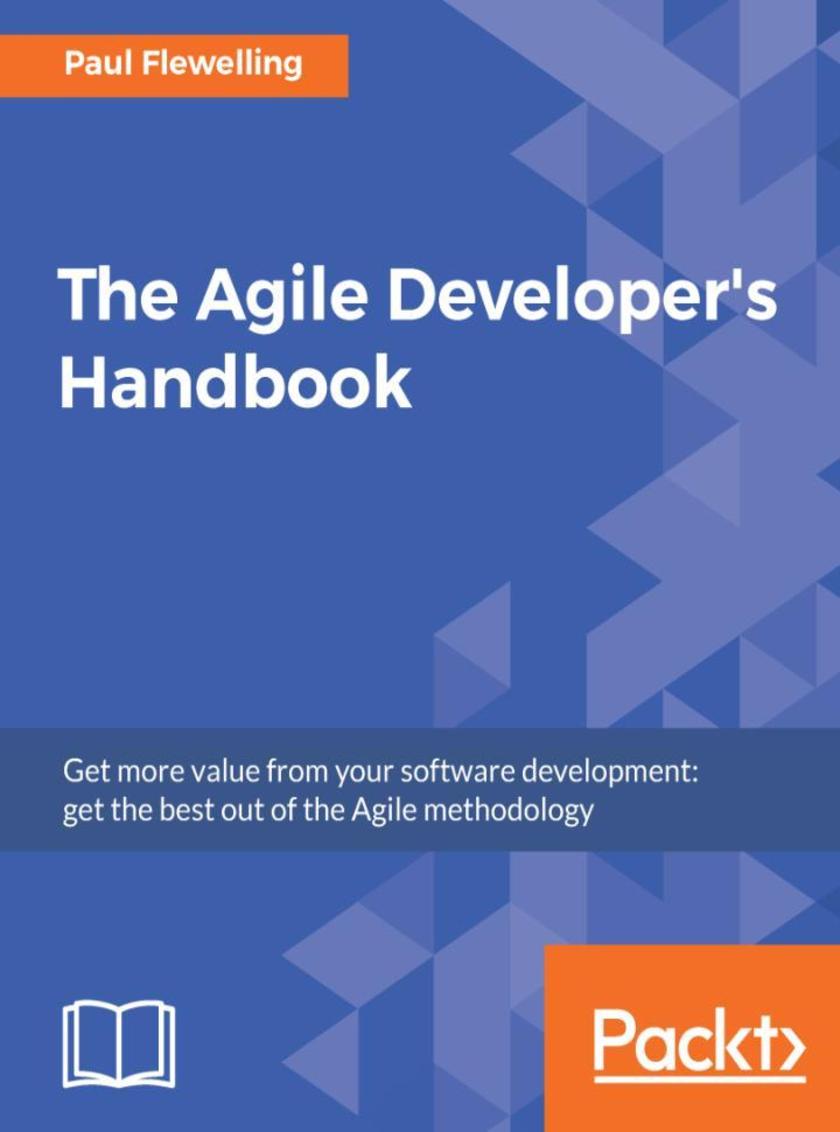
The Agile Developer's Handbook
¥73.02
A pragmatic companion guide to your Agile journey About This Book ? Make your team Agile by implementing industry-standard Agile techniques ? Assess scope, scale up efficiently ? Create the correct roles and identify the right candidates for your team ? Finish your projects faster and stay ahead of the curve Who This Book Is For If you’re a software developer or a project manager with little to no experience of Agile, but you want to efficiently implement it, this is the book for you. What You Will Learn ? Create a solid foundation that gives your team an Agile jumpstart ? Understand how to select and evolve practices to increase your team’s agility ? Use experiments to accelerate your team’s understanding ? Fine-tune your approach by incorporating aspects of Lean and Lean Startup ? Know how to foster an environment of continuous improvement and learning that will become self-sustaining In Detail This book will help you overcome the common challenges you’ll face when transforming your working practices from waterfall to Agile. Each chapter builds on the last, starting with easy-to-grasp ways to get going with Agile. Next you’ll see how to choose the right Agile framework for your organization. Moving on, you’ll implement systematic product delivery and measure and report progress with visualization. Then you’ll learn how to create high performing teams, develop people in Agile, manage in Agile, and perform distributed Agile and collaborative governance. At the end of the book, you’ll discover how Agile will help your company progressively deliver software to customers, increase customer satisfaction, and improve the level of efficiency in software development teams. Style and approach Think of this book like a manual, rather than a theoretical textbook. It’s packed full of visual ways to understand Agile, helpful tips to get you set up quickly, tried and tested solutions when challenges arise, and heaps of support to get the day-to-day tasks in Agile done. You’ll want to keep a copy on your desk, right next to your coffee cup.
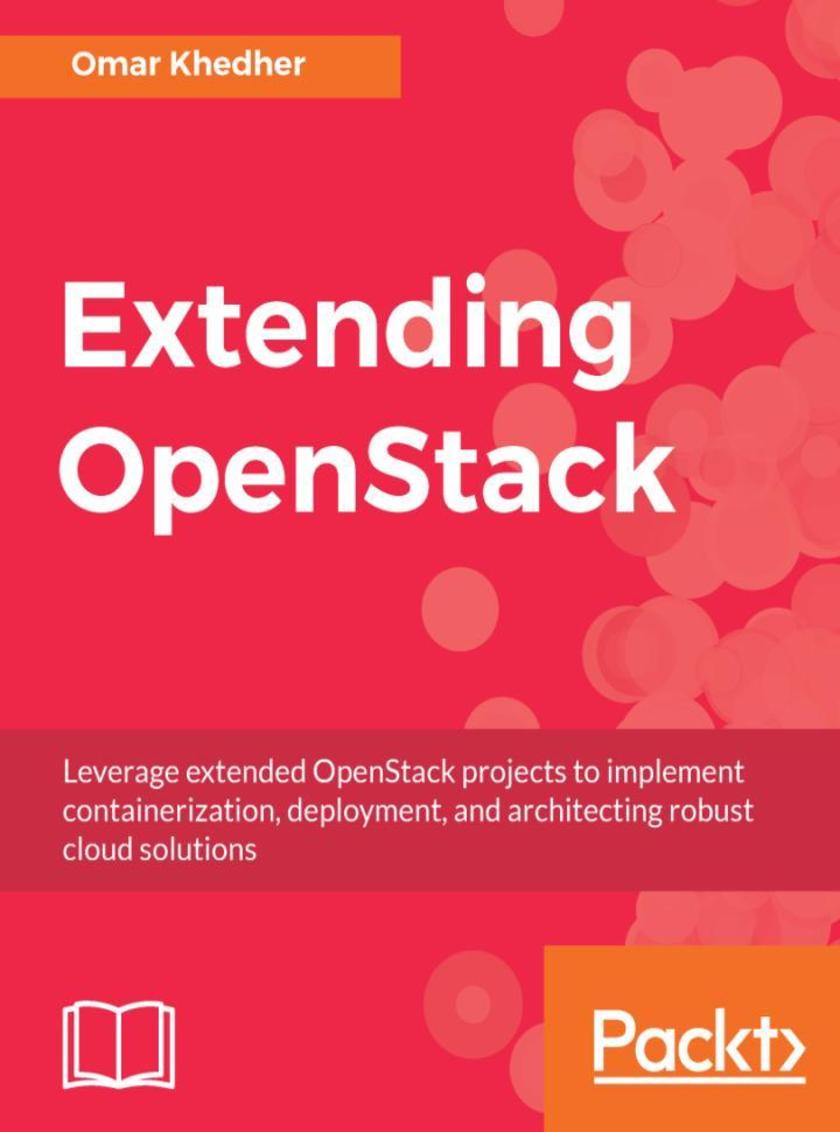
Extending OpenStack
¥73.02
Discover new opportunities to empower your private cloud by making the most of the OpenStack universe About This Book ? This practical guide teaches you how to extend the core functionalities of OpenStack ? Discover OpenStack's flexibility by writing custom applications and network plugins ? Deploy a containerized environment in OpenStack through a hands-on and example-driven approach Who This Book Is For This book is for system administrators, cloud architects, and developers who have experience working with OpenStack and are ready to step up and extend its functionalities. A good knowledge of basic OpenStack components is required. In addition, familiarity with Linux boxes and a good understanding of network and virtualization jargon is required. What You Will Learn ? Explore new incubated projects in the OpenStack ecosystem and see how they work ? Architect your OpenStack private cloud with extended features of the latest versions ? Consolidate OpenStack authentication in your large infrastructure to avoid complexity ? Find out how to expand your computing power in OpenStack on a large scale ? Reduce your OpenStack storage cost management by taking advantage of external tools ? Provide easy, on-demand, cloud-ready applications to developers using OpenStack in no time ? Enter the big data world and find out how to launch elastic jobs easily in OpenStack ? Boost your extended OpenStack private cloud performance through real-world scenarios In Detail OpenStack is a very popular cloud computing platform that has enabled several organizations during the last few years to successfully implement their Infrastructure as a Service (IaaS) platforms. This book will guide you through new features of the latest OpenStack releases and how to bring them into production straightaway in an agile way. It starts by showing you how to expand your current OpenStack setup and how to approach your next OpenStack Data Center generation deployment. You will discover how to extend your storage and network capacity and also take advantage of containerization technology such as Docker and Kubernetes in OpenStack. Additionally, you'll explore the power of big data as a Service terminology implemented in OpenStack by integrating the Sahara project. This book will teach you how to build Hadoop clusters and launch jobs in a very simple way. Then you'll automate and deploy applications on top of OpenStack. You will discover how to write your own plugin in the Murano project. The final part of the book will go through best practices for security such as identity, access management, and authentication exposed by Keystone in OpenStack. By the end of this book, you will be ready to extend and customize your private cloud based on your requirements. Style and approach This guide is filled with practical scenarios on how to extend and enhance OpenStack's functionality. We will be covering various installation and configuration platforms along with a focus on plugins and extending OpenStack's core functionalities.

Fixing Bad UX Designs
¥73.02
A practical guide filled with case studies and easy solutions to solve the most common user experience issues About This Book ? Understand and fix the pain points of a bad UX design to ensure greater customer satisfaction. ? Correct UX issues at various stages of a UX Design with the help of different methodologies for fixing bad UXs ? See best practices and established principles in UX with case studies illustrating these practices and principles Who This Book Is For This book is for anyone confronted with a poorly designed UX. It is ideal for UX professionals who want to solve problems with existing UX designs, and UX designers who want to enhance their designs or analyze and rectify where they went wrong. What You Will Learn ? Learn about ROI and metrics in UX ? Understand the importance of getting stakeholders involved ? Learn through real cases how to fix bad UX ? Identify and fix UX issues using different methodologies ? Learn how to turn insights and finding into practical UX solutions ? Learn to validate, test and measure the UX solutions implemented ? Learn about UX refactoring In Detail Have your web applications been experiencing more hits and less conversions? Are bad designs consuming your time and money? This book is the answer to these problems. With intuitive case studies, you’ll learn to simplify, fix, and enhance some common, real-world application designs. You’ll look at the common issues of simplicity, navigation, appearance, maintenance, and many more. The challenge that most UX designers face is to ensure that the UX is user-friendly. In this book, we address this with individual case studies starting with some common UX applications and then move on to complex applications. Each case study will help you understand the issues faced by a bad UX and teach you to break it down and fix these problems. As we progress, you’ll learn about the information architecture, usability testing, iteration, UX refactoring, and many other related features with the help of various case studies. You’ll also learn some interesting UX design tools with the projects covered in the book. By the end of the book, you’ll be armed with the knowledge to fix bad UX designs and to ensure great customer satisfaction for your applications. Style and approach This book takes a practical approach, with case studies, best practices, and practical solutions to bad design
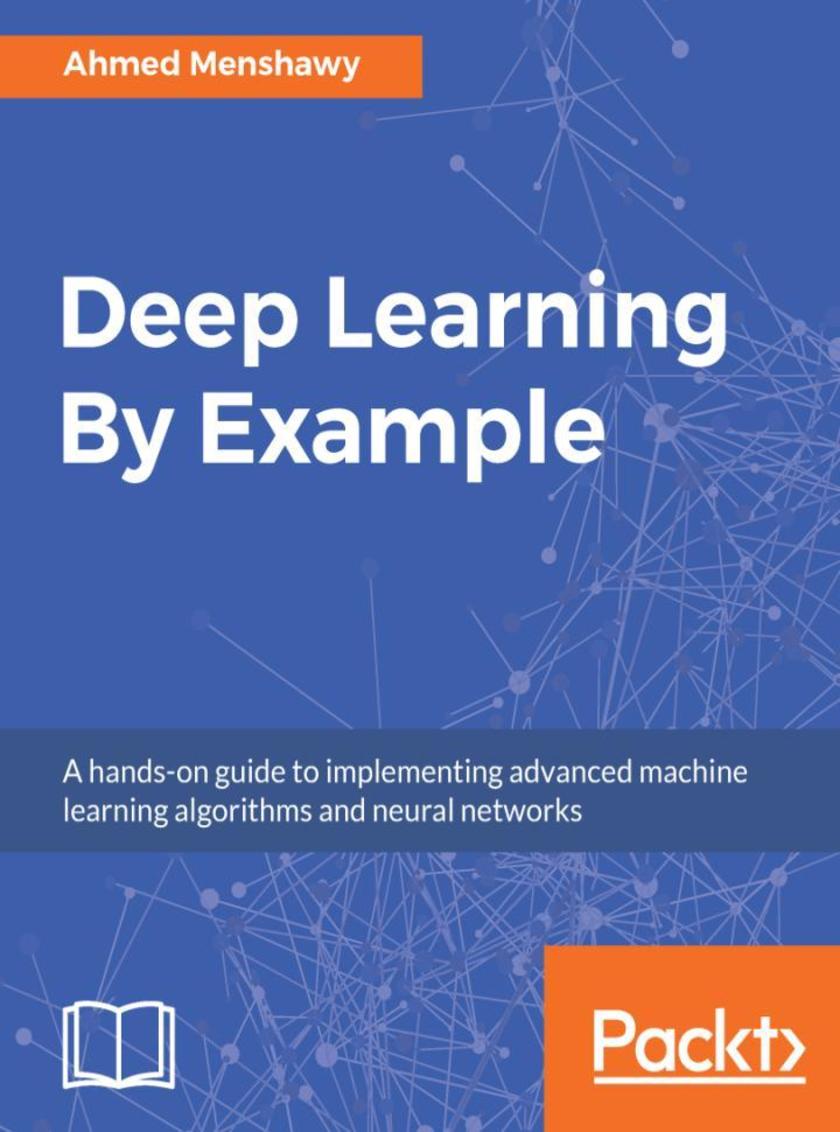
Deep Learning By Example
¥73.02
Grasp the fundamental concepts of deep learning using Tensorflow in a hands-on manner About This Book ? Get a first-hand experience of the deep learning concepts and techniques with this easy-to-follow guide ? Train different types of neural networks using Tensorflow for real-world problems in language processing, computer vision, transfer learning, and more ? Designed for those who believe in the concept of 'learn by doing', this book is a perfect blend of theory and code examples Who This Book Is For This book targets data scientists and machine learning developers who wish to get started with deep learning. If you know what deep learning is but are not quite sure of how to use it, this book will help you as well. An understanding of statistics and data science concepts is required. Some familiarity with Python programming will also be beneficial. What You Will Learn ? Understand the fundamentals of deep learning and how it is different from machine learning ? Get familiarized with Tensorflow, one of the most popular libraries for advanced machine learning ? Increase the predictive power of your model using feature engineering ? Understand the basics of deep learning by solving a digit classification problem of MNIST ? Demonstrate face generation based on the CelebA database, a promising application of generative models ? Apply deep learning to other domains like language modeling, sentiment analysis, and machine translation In Detail Deep learning is a popular subset of machine learning, and it allows you to build complex models that are faster and give more accurate predictions. This book is your companion to take your first steps into the world of deep learning, with hands-on examples to boost your understanding of the topic. This book starts with a quick overview of the essential concepts of data science and machine learning which are required to get started with deep learning. It introduces you to Tensorflow, the most widely used machine learning library for training deep learning models. You will then work on your first deep learning problem by training a deep feed-forward neural network for digit classification, and move on to tackle other real-world problems in computer vision, language processing, sentiment analysis, and more. Advanced deep learning models such as generative adversarial networks and their applications are also covered in this book. By the end of this book, you will have a solid understanding of all the essential concepts in deep learning. With the help of the examples and code provided in this book, you will be equipped to train your own deep learning models with more confidence. Style and approach A step-by-step guide filled with multiple examples to help you get started with data science and deep learning.
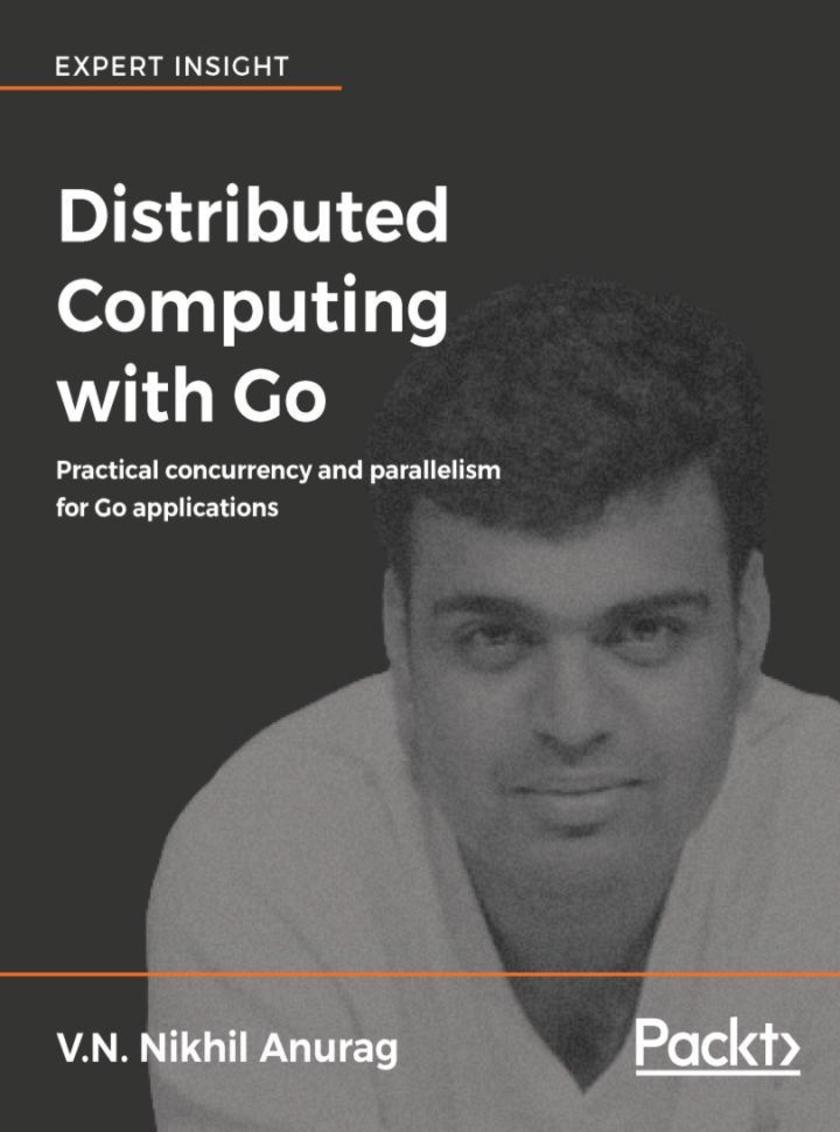
Distributed Computing with Go
¥73.02
A tutorial leading the aspiring Go developer to full mastery of Golang's distributed features. About This Book ? This book provides enough concurrency theory to give you a contextual understanding of Go concurrency ? It gives weight to synchronous and asynchronous data streams in Golang web applications ? It makes Goroutines and Channels completely familiar and natural to Go developers Who This Book Is For This book is for developers who are familiar with the Golang syntax and have a good idea of how basic Go development works. It would be advantageous if you have been through a web application product cycle, although it’s not necessary. What You Will Learn ? Gain proficiency with concurrency and parallelism in Go ? Learn how to test your application using Go's standard library ? Learn industry best practices with technologies such as REST, OpenAPI, Docker, and so on ? Design and build a distributed search engine ? Learn strategies on how to design a system for web scale In Detail Distributed Computing with Go gives developers with a good idea how basic Go development works the tools to fulfill the true potential of Golang development in a world of concurrent web and cloud applications. Nikhil starts out by setting up a professional Go development environment. Then you’ll learn the basic concepts and practices of Golang concurrent and parallel development. You’ll find out in the new few chapters how to balance resources and data with REST and standard web approaches while keeping concurrency in mind. Most Go applications these days will run in a data center or on the cloud, which is a condition upon which the next chapter depends. There, you’ll expand your skills considerably by writing a distributed document indexing system during the next two chapters. This system has to balance a large corpus of documents with considerable analytical demands. Another use case is the way in which a web application written in Go can be consciously redesigned to take distributed features into account. The chapter is rather interesting for Go developers who have to migrate existing Go applications to computationally and memory-intensive environments. The final chapter relates to the rather onerous task of testing parallel and distributed applications, something that is not usually taught in standard computer science curricula. Style and approach Distributed Computing with Go takes you through a series of carefully graded tutorials, building ever more sophisticated applications.
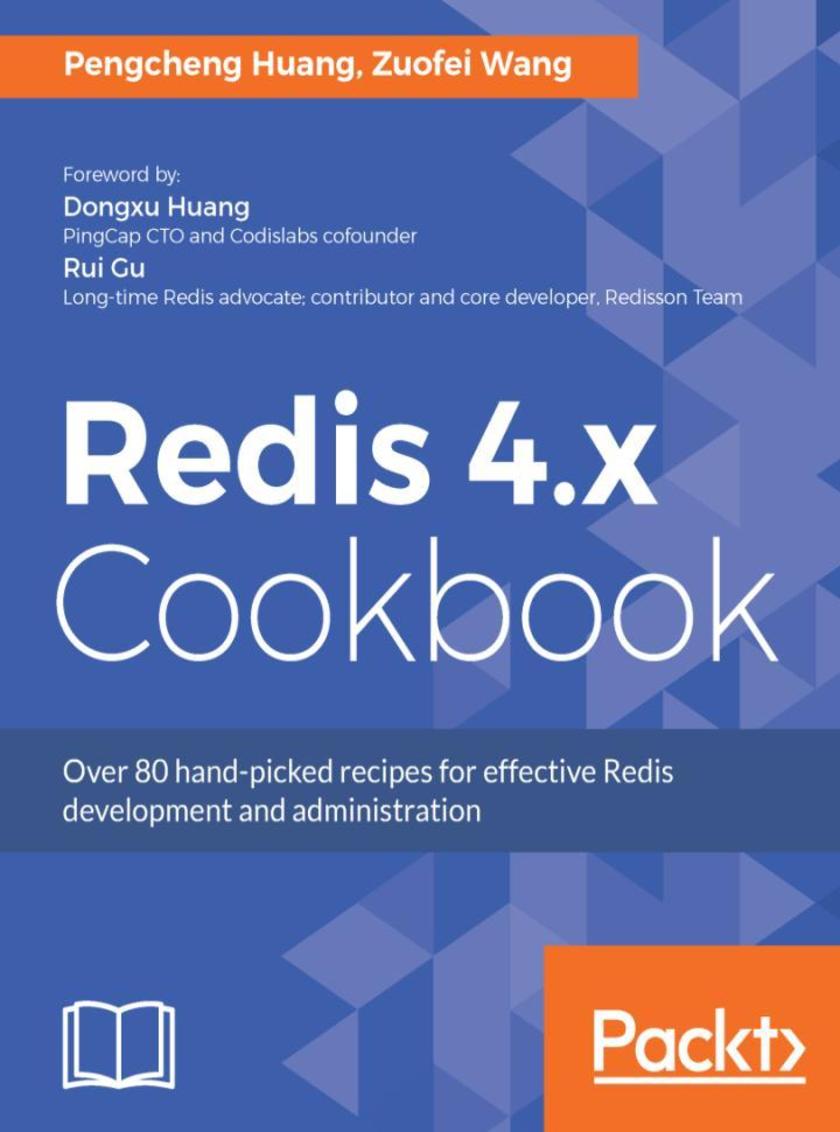
Redis 4.x Cookbook
¥73.02
Leverage the power of Redis 4.x to develop, optimize and administer your Redis solutions with ease About This Book ? Build, deploy and administer high performance and scalable applications in Redis ? Covers a range of important tasks - including development and administration of Redis ? A practical guide that takes your understanding of Redis to the next level Who This Book Is For This book is for database administrators, developers and architects who want to tackle the common and not so common problems associated with the different development and administration-related tasks in Redis. A fundamental understanding of Redis is expected to get the best out of this book. What You Will Learn ? Install and configure your Redis instance ? Explore various data types and commands in Redis ? Build client-side applications as well as a Big Data framework with Redis ? Manage data replication and persistence in Redis ? Implement high availability and data sharding in Redis ? Extend Redis with Redis Module ? Benchmark, debug, fine-tune and troubleshoot various issues in Redis In Detail Redis is considered the world's most popular key-value store database. Its versatility and the wide variety of use cases it enables have made it a popular choice of database for many enterprises. Based on the latest version of Redis, this book provides both step-by-step recipes and relevant the background information required to utilize its features to the fullest. It covers everything from a basic understanding of Redis data types to advanced aspects of Redis high availability, clustering, administration, and troubleshooting. This book will be your great companion to master all aspects of Redis. The book starts off by installing and configuring Redis for you to get started with ease. Moving on, all the data types and features of Redis are introduced in detail. Next, you will learn how to develop applications with Redis in Java, Python, and the Spring Boot web framework. You will also learn replication tasks, which will help you to troubleshoot replication issues. Furthermore, you will learn the steps that need to be undertaken to ensure high availability on your cluster and during production deployment. Toward the end of the book, you will learn the topmost tasks that will help you to troubleshoot your ecosystem efficiently, along with extending Redis by using different modules. Style and approach This book is a rich collection of recipes that will come in handy when you are working with Redis. It addresses your common and not-so-common pain points, so this is a book of Redis that you must have on the shelf.




 购物车
购物车 个人中心
个人中心



